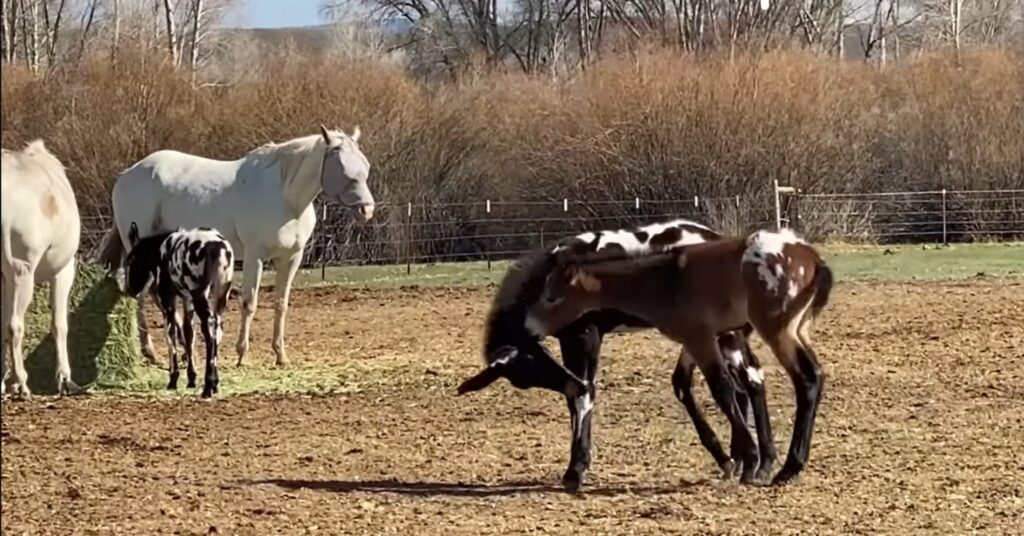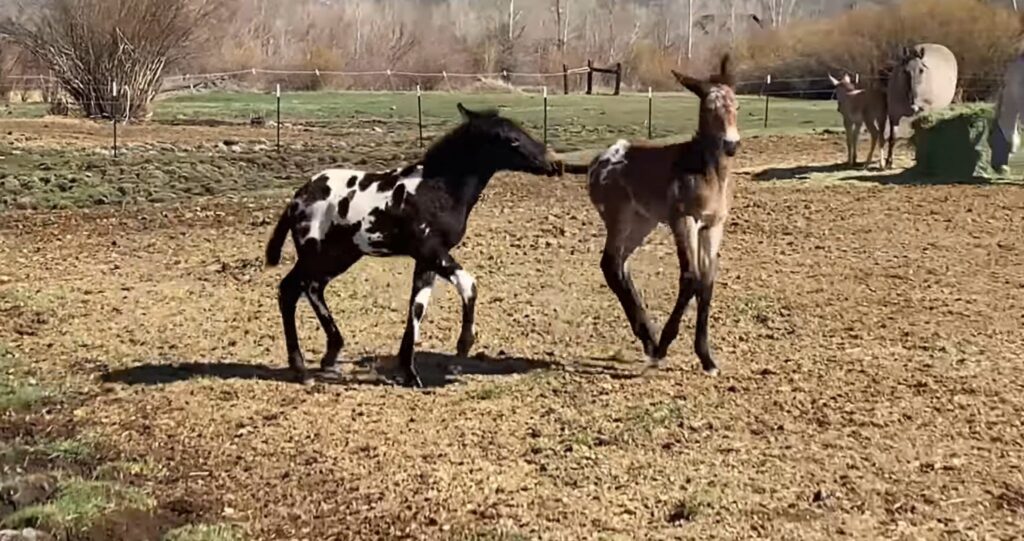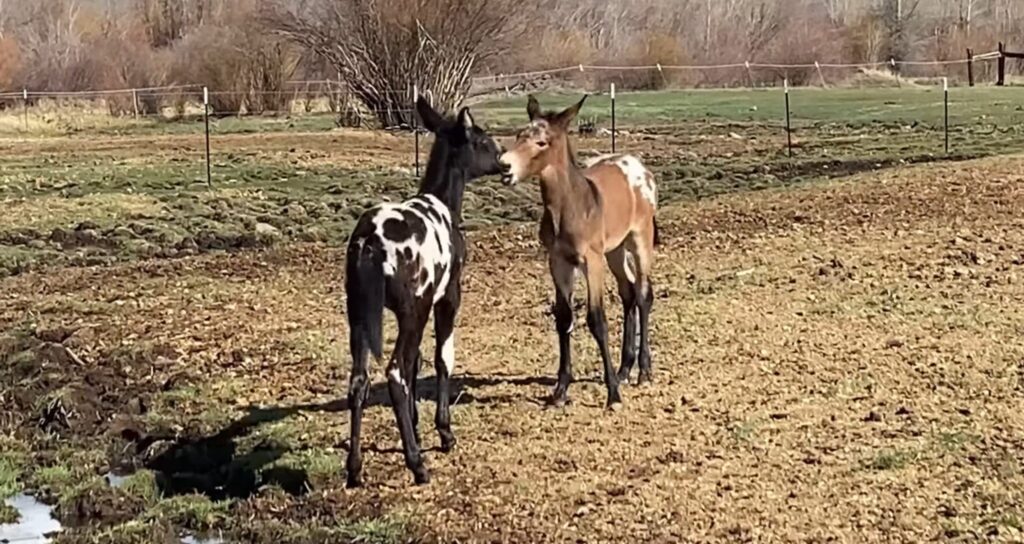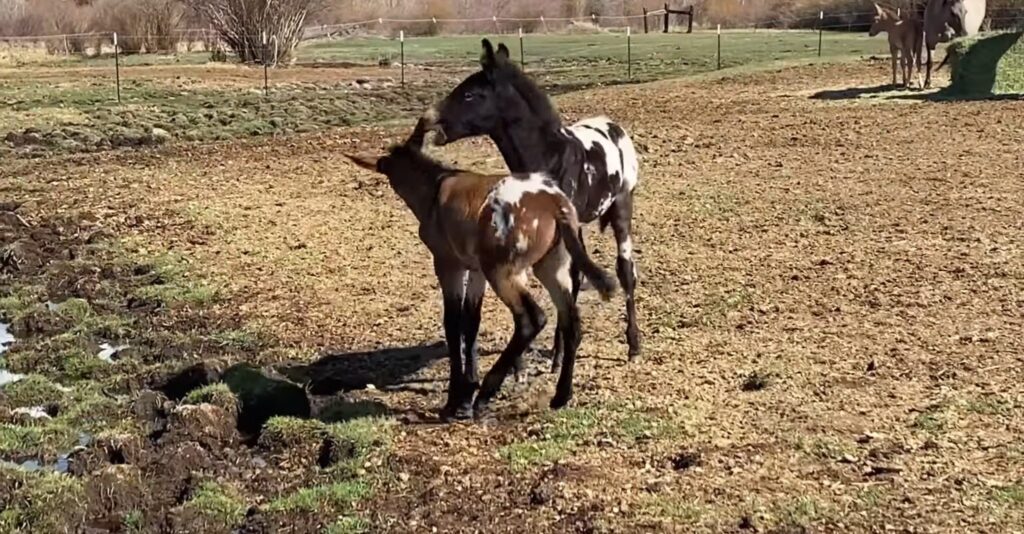Little Foals Meet Each Other And Start Playing Around
Even as foals, equines are capable of initiating and ending play sessions through a variety of behavioral signals. The most common ways that horses initiate contact are by nudging or nibbling, approaching nose-to-nose, or pawing at the other horse. Head-tossing is a common method of initiating play fighting.
Even as young as a day, a foal’s skipping and leaping demonstrate that all horses have a strong urge to play. Galloping and quick turns, facial gestures and tail waving are all part of foal training. They develop life skills later in life by mimicking adult behavior.

The foal will spend much of its time sleeping, nursing, and playing. Whenever possible, mares and foals should spend time together outside. Sometimes you’ll witness a foal sniffing around a pile of dung. The foal will not be harmed by this.

However, they should not be allowed to bite, strike out, or kick. They are adorable as foals, but can be dangerous as the horse grows stronger, faster and more rambunctious. A newborn foal’s hoof could be fun to shake, but a fully grown horse’s hoof might be dangerous.

In addition, play is rare and consists mostly of short bucks and sprints while the mother is nearby. It’s also common for foals to toy with the mare’s tail, ears and mane at this age. Foals less than a day old may eat a little grass during this time, although it’s rare for them to do so.

To assist you determine whether a horse is behaving normally or abnormally, you need to know what a horse’s “normal” behavior is. You can use this information to come up with a management strategy for your horse. Even while behaviorists will use similar names to describe equine activities, there may be minor differences in the categories employed. Depending on how significant they think specific behaviors are to the horse’s makeup or management tactics, some behaviorists may place extra emphasis on them. Play behavior, for example, might be considered a main behavior in young horses because of its relevance and variety.
